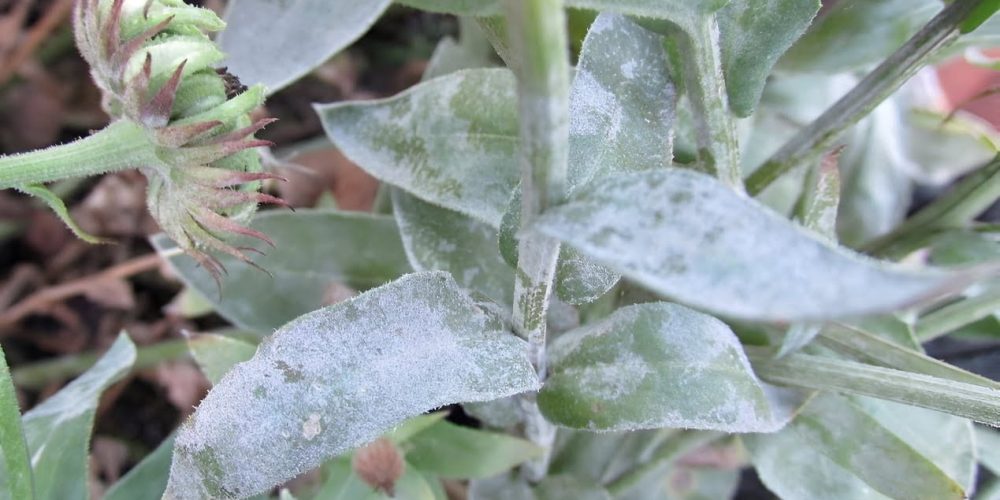Table of contents of the article
TogglePowdery mildew on eggplants is a common disease that affects eggplants and affects their productivity. In this article on your website, WORLD OF PLANTS, we present methods of prevention and treatment.
Symptoms of powdery mildew on eggplants
- Scientific name : Powdery mildew of Solanaceae
- Type of disease: Innate
- The causative fungus : Leafillula taurica
- Symptoms appear on the lower surface of the leaf in the form of white, fine-looking growths, offset on the upper surface by yellow spots that become more apparent as the disease develops.
- Severely infected leaves become yellow, then brown, and often fall. .
- The lower and older leaves are usually infected first, then the disease spreads to the newer upper leaves.
- Symptoms of the disease are seen on the fruits and the stem as well.
- Sometimes symptoms appear on the upper surface of the leaves, and these symptoms are caused by the fungus Didium neolycopersici Kiss.
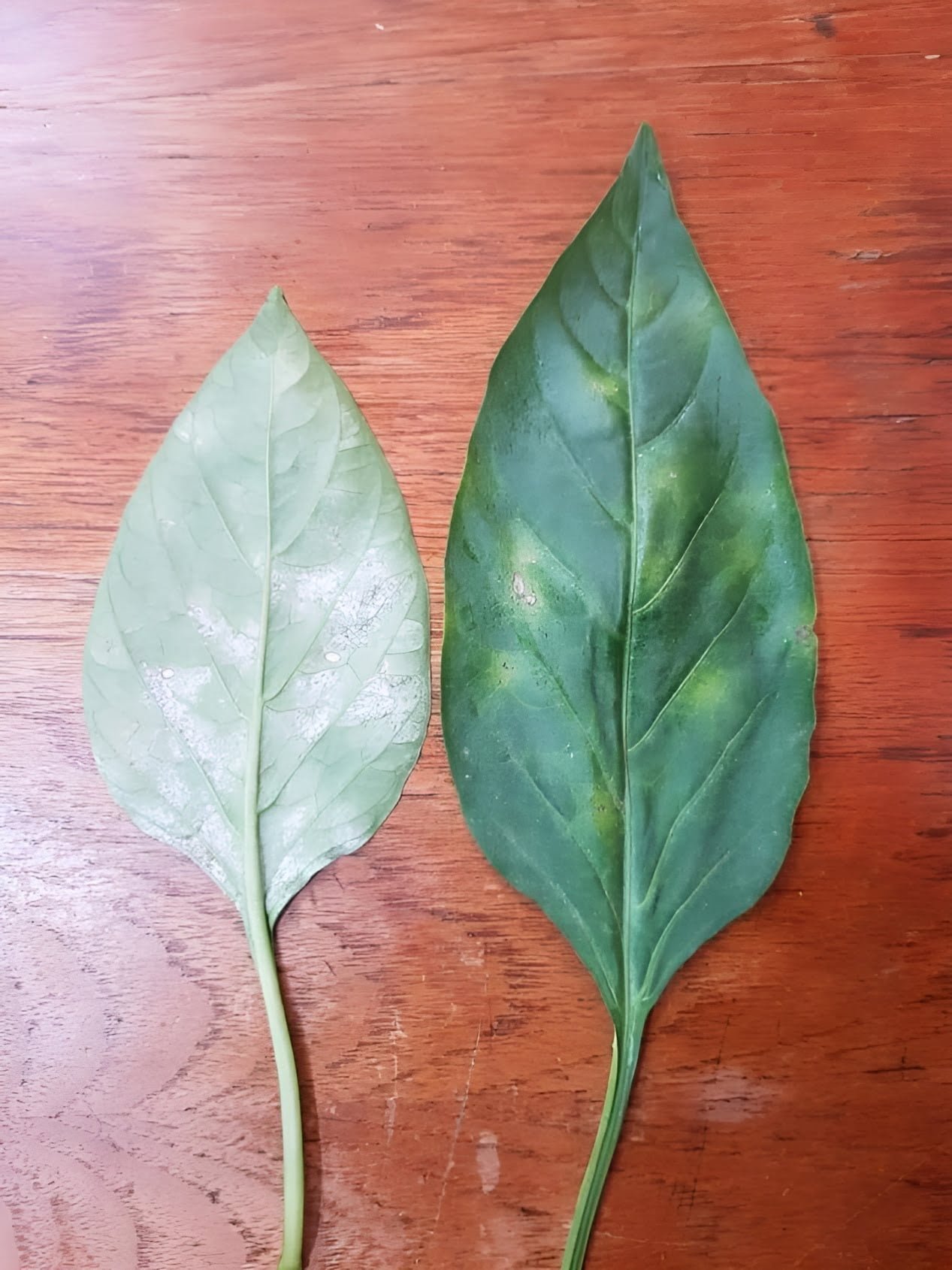
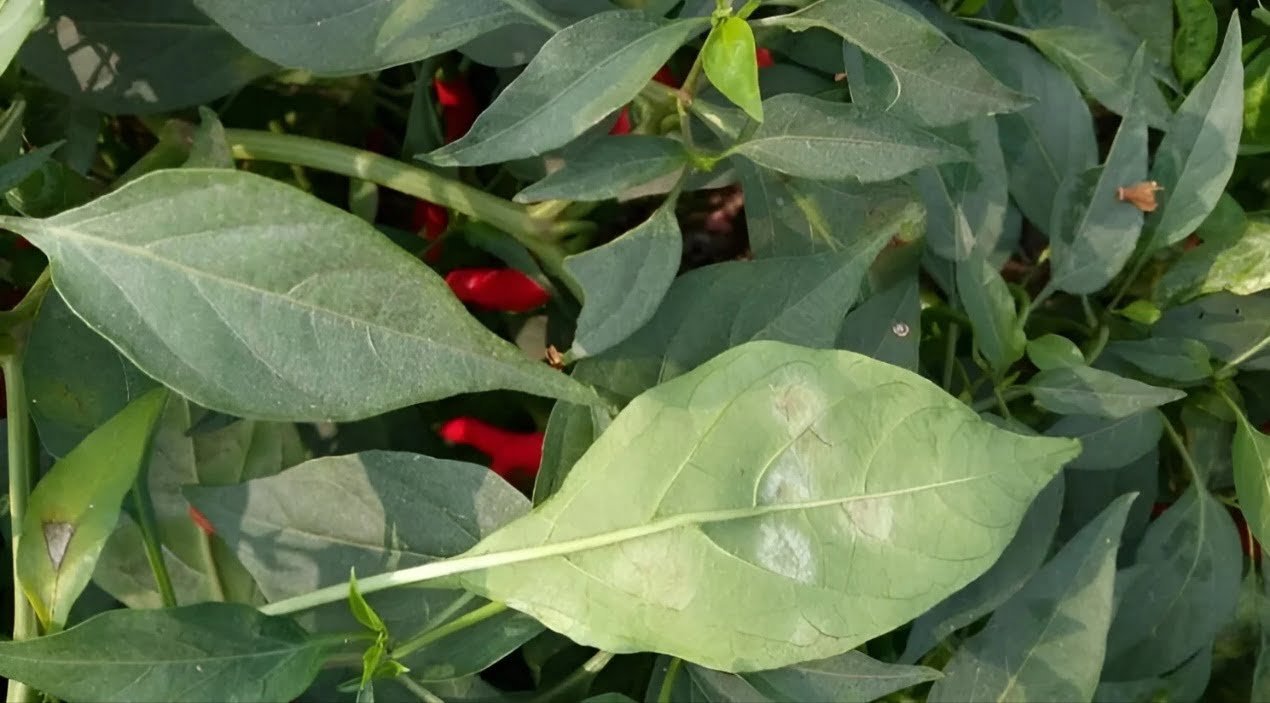
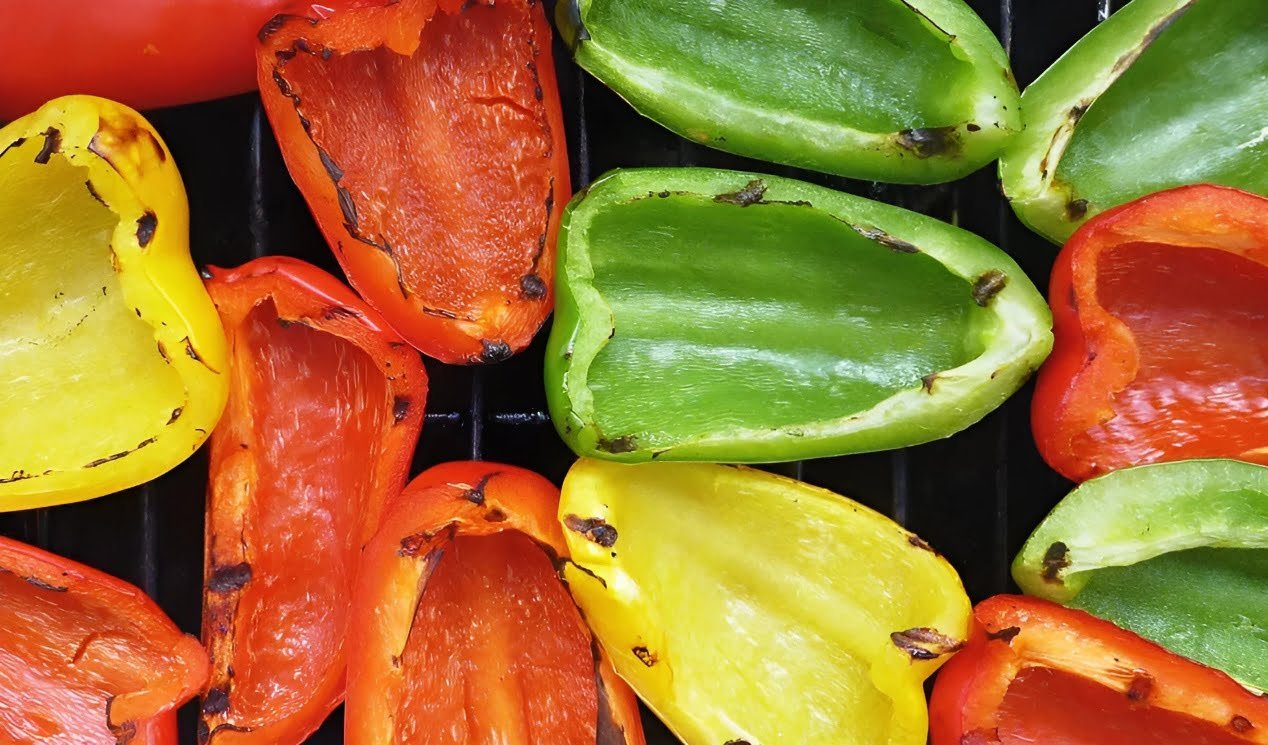
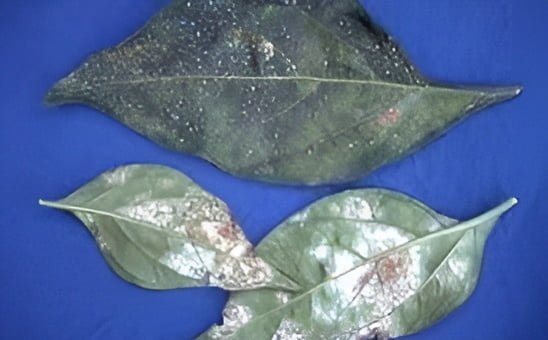
Causes of powdery mildew on eggplants
- Young plants are usually less sensitive than older plants.
- Overcrowded plants and good plant growth as a result of excess nitrogen fertilization encourage infection
- This disease affects, in addition to plants of the Solanaceae family (capsicum, tomatoes, eggplant, tobacco, and potatoes), other plants belonging to different families, such as onions, leeks, garlic, artichokes, cucumbers, okra, cotton, and beans.
- Heavy irrigation and rainfall.
- The presence of weeds and plant residues and not removing them
- Components of the fungus residing in the scales of buds and the cracks of fallen leaves from the pepper plant on the surface of the soil.
- The weather conditions, such as humidity and high temperature in pepper and vegetable fields, lead to infection with the fungus, as the fungus loves moisture.
- The availability of a warm and dry atmosphere within pepper fields is considered the main reason for the infection of this fungus on the plant.
- The presence of wind, and the lack of windbreaks around pepper fields, encourages infection because it transports conidial spores of the fungus.
- The presence of other pests in the house or around the field that leads to infection (such as flies, borers, pepper leafworm, etc.).
Suitable conditions for the spread of powdery mildew on eggplants
Mushrooms grow optimally at a temperature of 25°C, and a relative humidity of less than 80 % % during the day, and higher than 85 % at night.
Powdery mildew development cycle on nightshade
- The disease cycle begins when the conidial spores of the fungus fall on the leaf of the host plant and infection occurs, then the fungal mycelium grows within the leaf tissue.
- After an incubation period of 18-21 days, the fungal mycelium emerges from the stomata on the lower surface of the leaf, and spores are formed, which are carried individually on the sporophore.
- These spores are spread by air currents to infect other plants.
- The disease cycle can repeat several times during the season.
- The fungus maintains its life from one season to another on living plants of the same crop, or on other plants that can also become infected with the disease
Losses from the spread of powdery mildew on nightshades
- The disease affects the quantity of production and the quality of fruits, as a result of the loss of leaves in the case of severe infection.
- The danger of powdery mildew on pepper stems from the fact that it weakens the plant in areas of infection and encourages the emergence of new pests. The main pests that may be attracted are boring pests, leafhoppers, tunnel makers and pepper leafworm
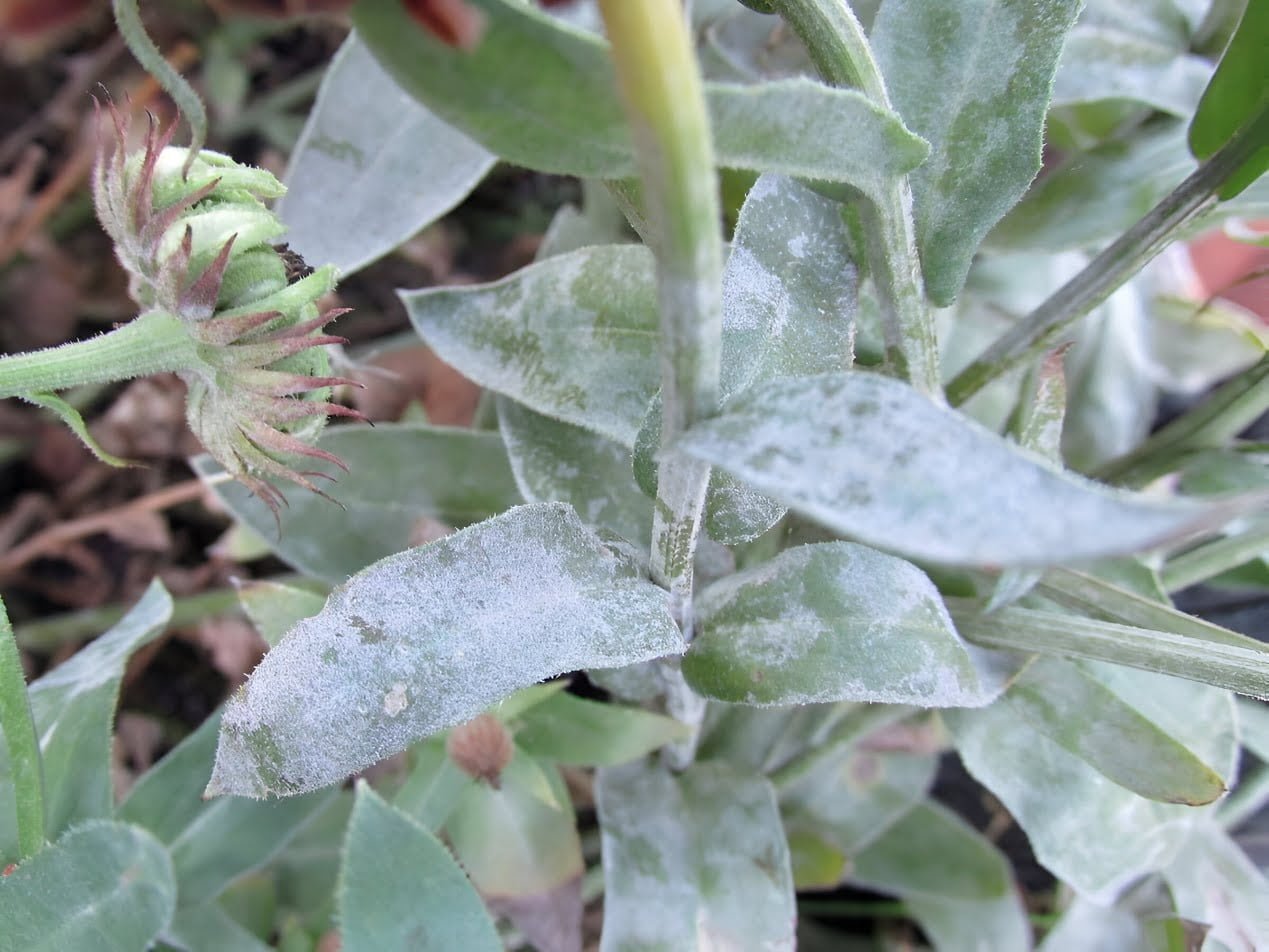
Control strategy
Preventive measures to prevent powdery mildew on eggplants
- Leave appropriate distances between plants to avoid increased humidity around the leaves. Pepper plants are planted at appropriate distances, which are 50 cm between plants and 60 cm between lines for sweet peppers, and 40 cm between plants and 50 cm between lines for sharp peppers.
- Get rid of weeds that can host the disease.
- Carrying out preventive pruning of peppers in order to ensure that it is not infected with other diseases, insect pests, etc
- The soil in pepper fields is deeply plowed to a depth of up to 40 cm before planting.
- Regular watering and good ventilation.
- Avoid excessive nitrogen fertilization and take care of potassium fertilization, especially during the flowering and contracting stages.
Chemical and organic control recommendations
- Organic control :
- Planting resistant varieties
- Control with rhizosphere bacteria and Trichoderma, as it was found that the bacteria Pseudomonas fluorescens leads to an increase in the activity of defense enzymes and an increase in the plants’ content of defense-inducing compounds.
- Control with plant extracts, where treatment with extracts of azdachtin leaves at a concentration of 10% and bulbs of Allium sativum (garlic), and A. cepa (onions) at a concentration of 5% resulted in a strong inhibition of the germination of conidial fungus spores.
- Chemical control:
- The use of organic sulfur compounds and registered systemic pesticides to combat this disease. When dealing with this fungus, it is preferable to use pesticides related to terazole derivatives, strobilin derivatives, and the pesticide Mancozeb. The systemic pesticide carbendizim can also be used by spraying the leaves and small fruits of pepper.
- In addition, the fungus can be controlled by using micronized sulfur with rimidine pesticides and spraying it on the fruits and leaves of pepper. The farmer is also keen to repeat the spraying two weeks after the first spray.
In conclusion, we would like to note that we, at the world of plants website, offer you all the necessary services in the world of plants, we provide all farmers and those interested in plants with three main services::-
- Artificial intelligence consulting service to help you identify diseases that affect plants and how to deal with them.
- Blog about plants, plant diseases and care of various crops ... You are currently browsing one of her articles right now.
- An application that provides agricultural consultations to clients, as well as a service for imaging diseases and knowing their treatment for free – Click to download the Android version from Google Play Store، Click to download the IOS version from the Apple App Store.
References:
- Kiss, L., Jankovics, T., Kovács, G. M., & Daughtrey, M. L. (2008). Oidium longipes, a new powdery mildew fungus on petunia in the USA: a potential threat to ornamental and vegetable solanaceous crops. Plant Disease, 92(5), 818-825
- Cunnington, J. H., Lawrie, A. C., & Pascoe, I. G. (2005). Molecular identification of Golovinomyces (Ascomycota: Erysiphales) anamorphs on the Solanaceae in Australia. Australasian Plant Pathology, 34, 51-55
- Whipps, J. M., Budge, S. P., & Fenlon, J. S. (1998). Characteristics and host range of tomato powdery mildew. Plant Pathology, 47(1), 36-48
- Characteristics and host range of tomato powdery mildew – WILEY ONLINE LIBRARY
- Molecular identification of Golovinomyces (ascomycota: Erysiphales) anamorphs on the Solanaceae in Australia – springer
- Oidium longipes, A New Powdery Mildew Fungus on Petunia in the USA – The American Phytopathological Society




